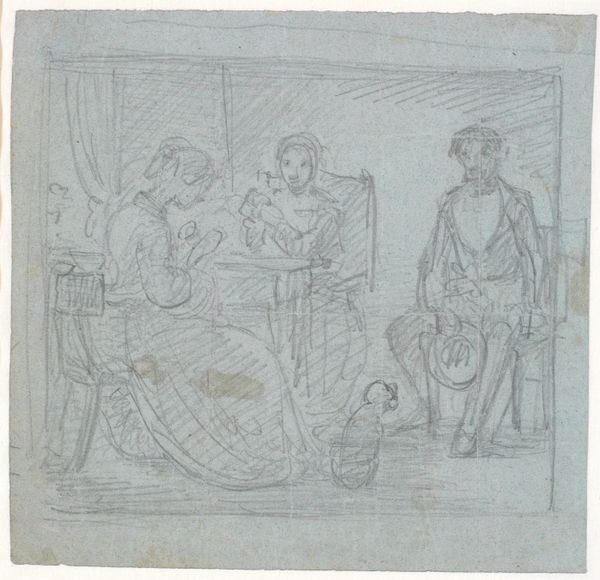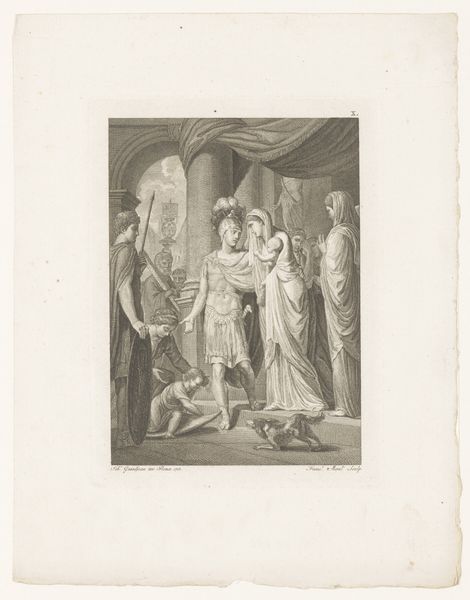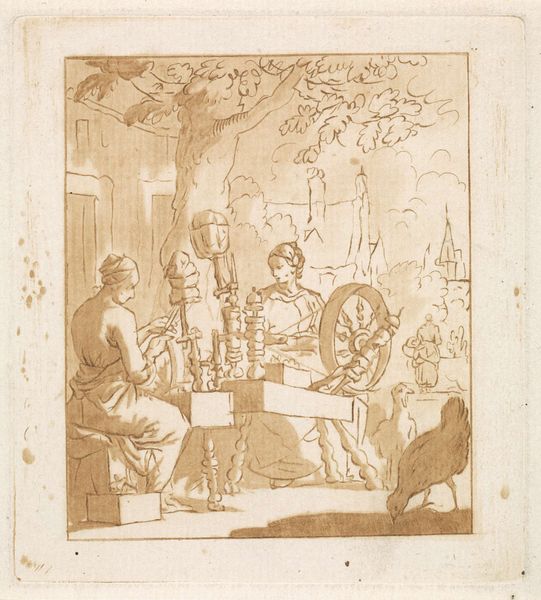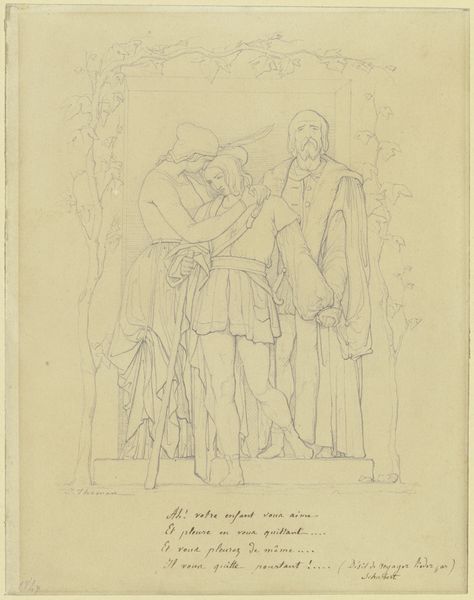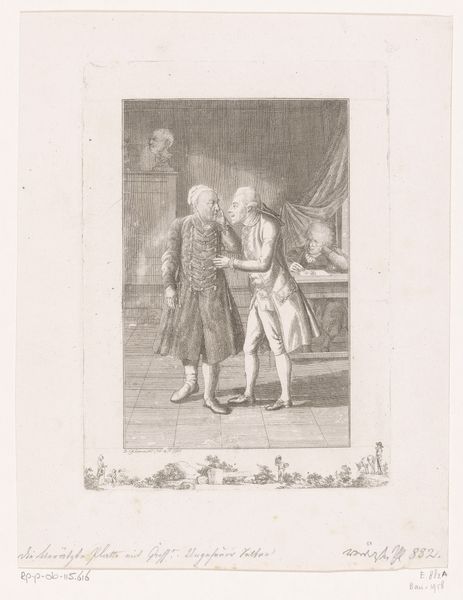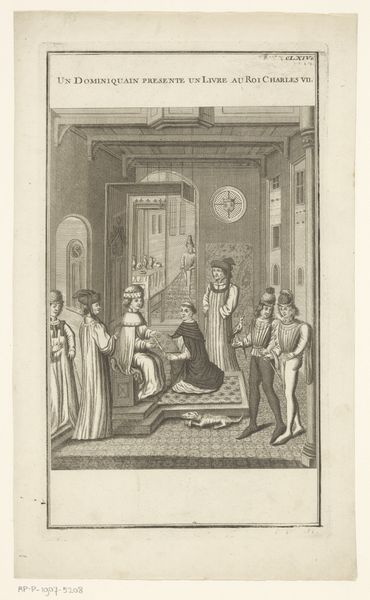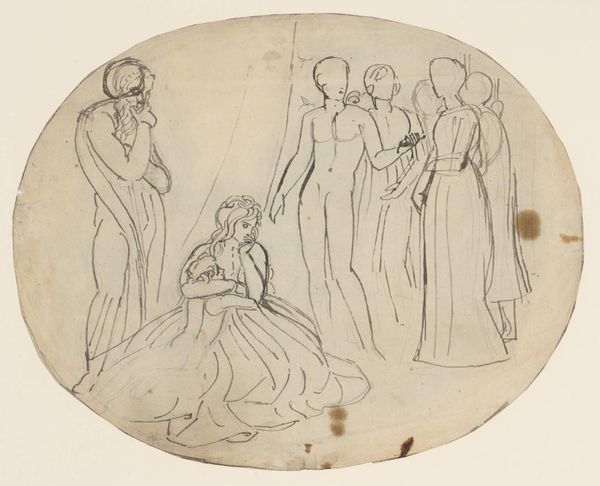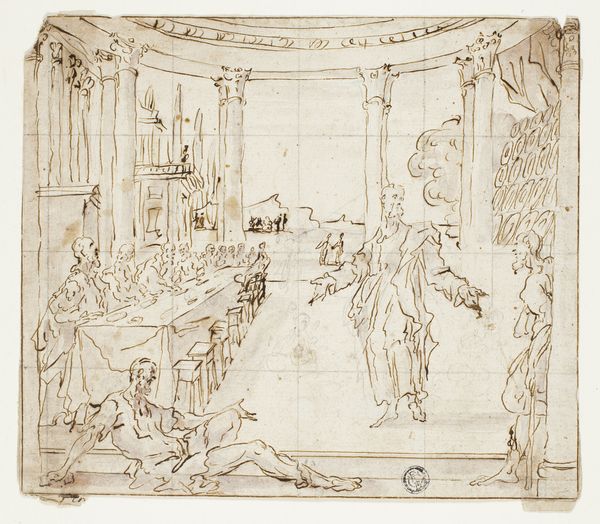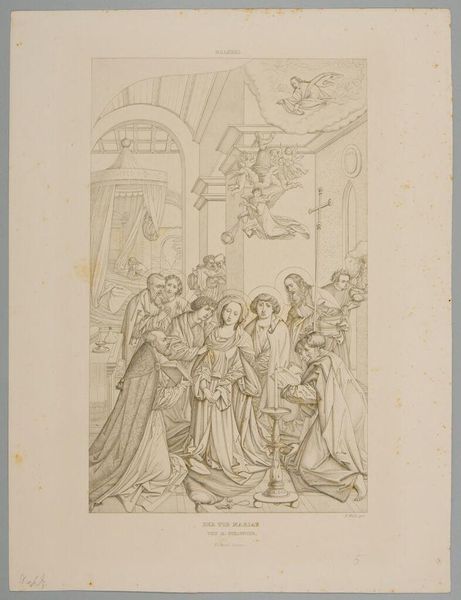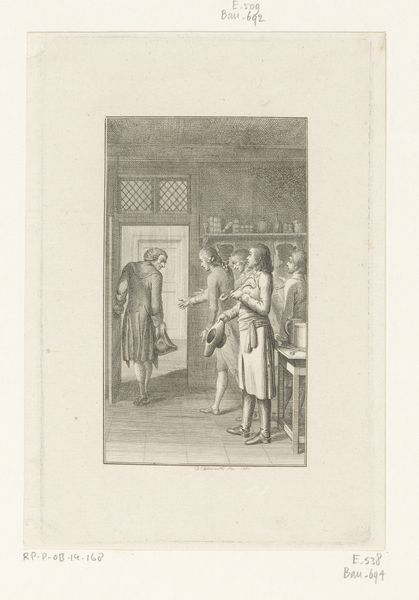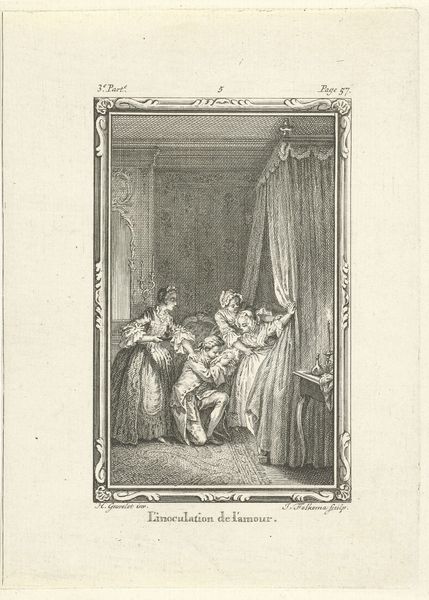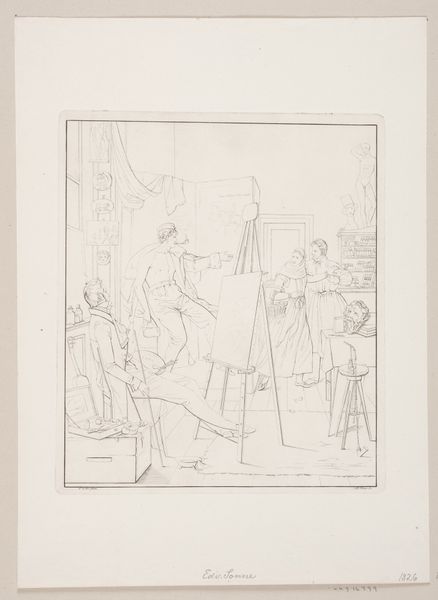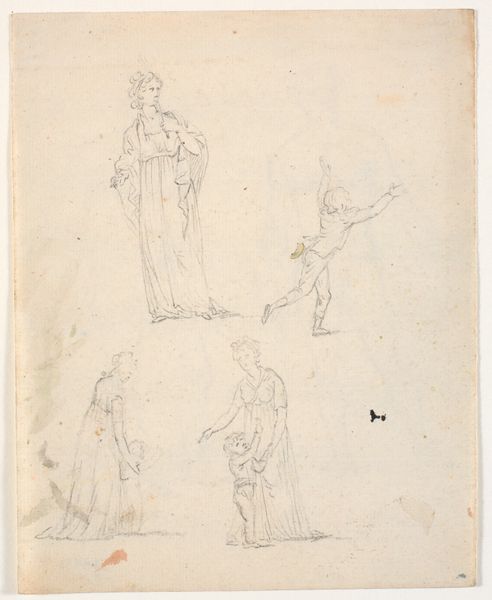
Dimensions: 87 mm (height) x 64 mm (width) (plademaal)
Curator: This delicate line drawing, "Et besøg," or "A Visit," was rendered sometime between 1749 and 1790 by Erik Pauelsen. It's a striking example of the drawing and printmaking from that era. Editor: The immediate feeling is one of starkness, isn't it? The spare use of line, the almost diagrammatic quality, creates an unsettling atmosphere. The composition divides the space distinctly: the man on one side, the family on the other, framing the moment as confrontational, maybe even confrontational? Curator: Absolutely. Let’s consider the historical context. Pauelsen lived through a period of social upheaval. Genre painting such as this would often implicitly carry cultural commentary on things like shifting family roles or gender expectations. Here the single man visits the family unit, presenting a challenge to established order in the domestic sphere. The almost aggressive lines of his physique confront the covered family—especially when considering class dynamics. He seems to hold more power despite the family unity. Editor: Power is visually articulated by his pose; in the geometry of the scene, it's that right arm extended across the doorway, dividing the space. The details tell the story: the hat perched above the doorway, the classical curve of the table leg, which are small aesthetic components of the staged moment and seem to play a crucial part in the overall scene’s interpretation. Curator: Precisely! The classical table and the clothing styles also evoke the contemporary philosophical movement which emphasized ideals and reason. There’s a tension between these stylistic signals and the raw emotion palpable in the figures’ expressions and physicality. Look closely at how the composition directs the viewer's gaze to certain intersectional clues. Editor: Yes, the engraver used his own compositional tools to guide the eye towards key focal points to communicate his social intention with great refinement, such as the framing of the family’s faces by the shadows or the lines defining his pose. You also have to give him some credit for capturing what appears to be a full narrative using as few compositional details as possible, don’t you think? Curator: Absolutely. It is a moment of great social, cultural, and personal intensity depicted with remarkable formal control. Editor: Ultimately, the success here, I think, stems from Pauelsen’s command of light, shadow, and line, which all reinforce the tension in this very brief glimpse of social intersection and dialogue.
Comments
No comments
Be the first to comment and join the conversation on the ultimate creative platform.
